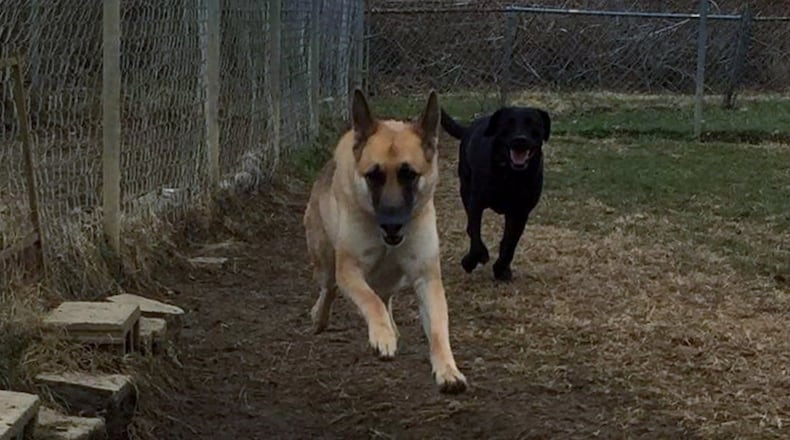Our two previous dogs, Mocha and Lucy, at certain times in their lives were a pound or two overweight. Increased activity, especially in the warmer months, usually took care of that.
Teddy, my family’s 5-year-old Lab, weighs 60 pounds. He is on the small side for male Labs. The breed’s males typically weigh between 60 and 80 pounds.
For his size, Teddy is perfect. But colder weather means more indoor time with less physical activity for him. I was interested to see what types of solutions the magazine offered to keep Teddy fit and trim.
The article on exercise was a list of five activities to keep your dog moving regardless of age. Swimming, biking, mini-hikes, sniffaris and playing with a flirt pole are all great energy- and calorie-burners but not always practical for winter, so I quickly moved on.
Arden Moore’s article, “10 real weight-loss tips that work,” listed tips that could apply to any dog regardless of size.
Moore writes there are actually fat farms, weight-loss centers and diet pills for dogs needing to shed a few pounds. I wondered for a few minutes about what I had just read, then I laughed. Back to the tips.
The second tip, “Swap out treats for calorie-free praise,” should have been written, “Karin, give Teddy more verbal praise and less treats.”
The Lab knows if I’m in the kitchen and he gives me his famous large, round cow-eyes look I’ll head for his cookie jar. I’m more than happy to give Teddy praise and a cookie for the simplest tasks. Sitting, standing, waiting, not destroying the house when I’m gone all get praise and treats. Games successfully played earn treats. Letting me take his picture involves treats.
Teddy has my number.
The seventh tip, offering high-nutrient, low-calorie veggies, was something we already do. That tip soothed my bruised ego just a bit. There’s always a bag of baby carrots in the refrigerator just for the canine. Moore suggests substituting a baby carrot or a piece of zucchini for a pizza crust.
I don’t like pizza crusts and occasionally I have given one to Teddy. “Well, bud,” I said to my writing companion basking in the winter sun, “no more pizza crusts for you.” I think the pooch gave me the stink eye.
The sixth tip, recognizing certain breeds are prone to obesity, was an eye-opener. The first breed on the list, you guessed it, was the Labrador Retriever. I again looked at my beloved writing companion and said, “You are officially number one on your mom’s staying-in-shape list.”
Teddy got up, stretched, then walked into the family room and laid down beside his dad.
COUNTING CANINE CALORIES
1. Weigh your dog on a reliable scale
2. Divide you dog’s weight by 2.2
3. Multiply this figure time 30
4. Add 70 and you will have the number of calories to feed a typical dog
SOURCE: “Dogster,” February/March 2020
About the Author

